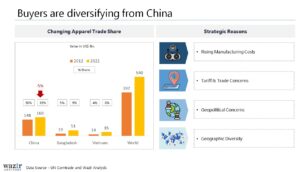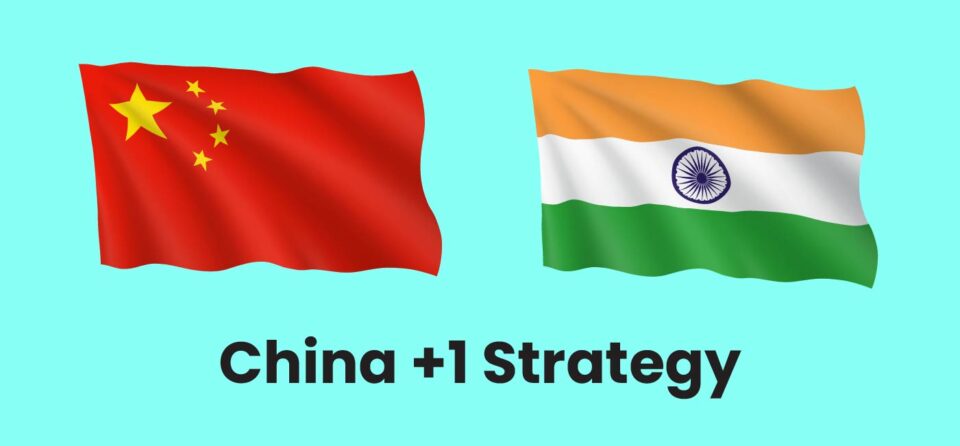Backed by the ‘China Plus One’ sentiment globally, India’s textile exports is expected to grow by 81 per cent to $65 billion by 2026 from the pre-Covid level of around $36 billion in 2019, said a report by the Confederation of Indian Industry (CII) and global consulting firm Kearney. This jump is likely to generate 7.5-10 million new jobs.
A large chunk of this targeted increase, or around $16 billion may come from the China Plus One sentiment due to India’s relatively large strategic depth compared with Vietnam or Bangladesh, the report said.
The “China Plus One” policy is a business strategy adopted by companies that have significant manufacturing operations in China.
The strategy involves diversifying their manufacturing and supply chain operations by establishing additional facilities in other countries. This approach aims to reduce reliance on China and mitigate risks associated with over-concentration in one country. Here are some key aspects of the “China Plus One” policy:

Risk Mitigation:
Supply Chain Disruptions: Companies seek to protect themselves from potential supply chain disruptions due to geopolitical tensions, trade wars, or regional crises. The COVID-19 pandemic highlighted the vulnerability of supply chains heavily dependent on China.
Regulatory and Tariff Risks: With ongoing trade disputes and tariffs imposed by major economies like the United States, companies are looking to avoid additional costs and compliance issues associated with manufacturing solely in China.
Cost Optimization:
Rising Costs in China: As wages and production costs in China continue to rise, companies are exploring more cost-effective locations for manufacturing. Countries with lower labour costs and favourable economic conditions become attractive alternatives.
Diversification of Investment: By spreading investments across multiple countries, companies can achieve more balanced cost structures and potentially improve their profit margins.
Closer to End Markets: Establishing manufacturing bases in countries closer to key markets can reduce shipping times and costs. For example, setting up operations in Southeast Asia or South Asia can provide better access to markets in Europe, North America, and other regions.
Regional Trade Agreements: Companies can benefit from favourable trade agreements and regional economic partnerships by diversifying their manufacturing locations. This can lead to reduced tariffs and improved market access.
Sustainability and Compliance:
Environmental and Social Governance (ESG): Increasingly, companies are under pressure to meet stringent environmental and social standards. Diversifying manufacturing locations allows companies to adopt best practices in sustainability and social responsibility.
Compliance with Local Regulations: Operating in multiple jurisdictions helps companies comply with local regulations and standards, reducing the risk of legal and regulatory issues.
Strategic Flexibility:
Agility and Adaptability: Diversifying manufacturing operations enhances a company’s ability to adapt to changing market conditions and consumer preferences. It also provides strategic flexibility to shift production in response to external shocks.
Innovation and Local Adaptation: Operating in different regions can spur innovation and allow companies to tailor products to local markets, enhancing their competitive edge.
Countries like Vietnam, India, Bangladesh, Thailand, and Indonesia are some of the preferred alternatives for companies adopting the “China Plus One” strategy. These countries offer a combination of lower production costs, favourable demographic profiles, improving infrastructure, and supportive government policies.
In summary, the “China Plus One” strategy is about creating a more resilient and cost-effective manufacturing and supply chain network by reducing over-reliance on China and establishing additional manufacturing bases in other countries.

